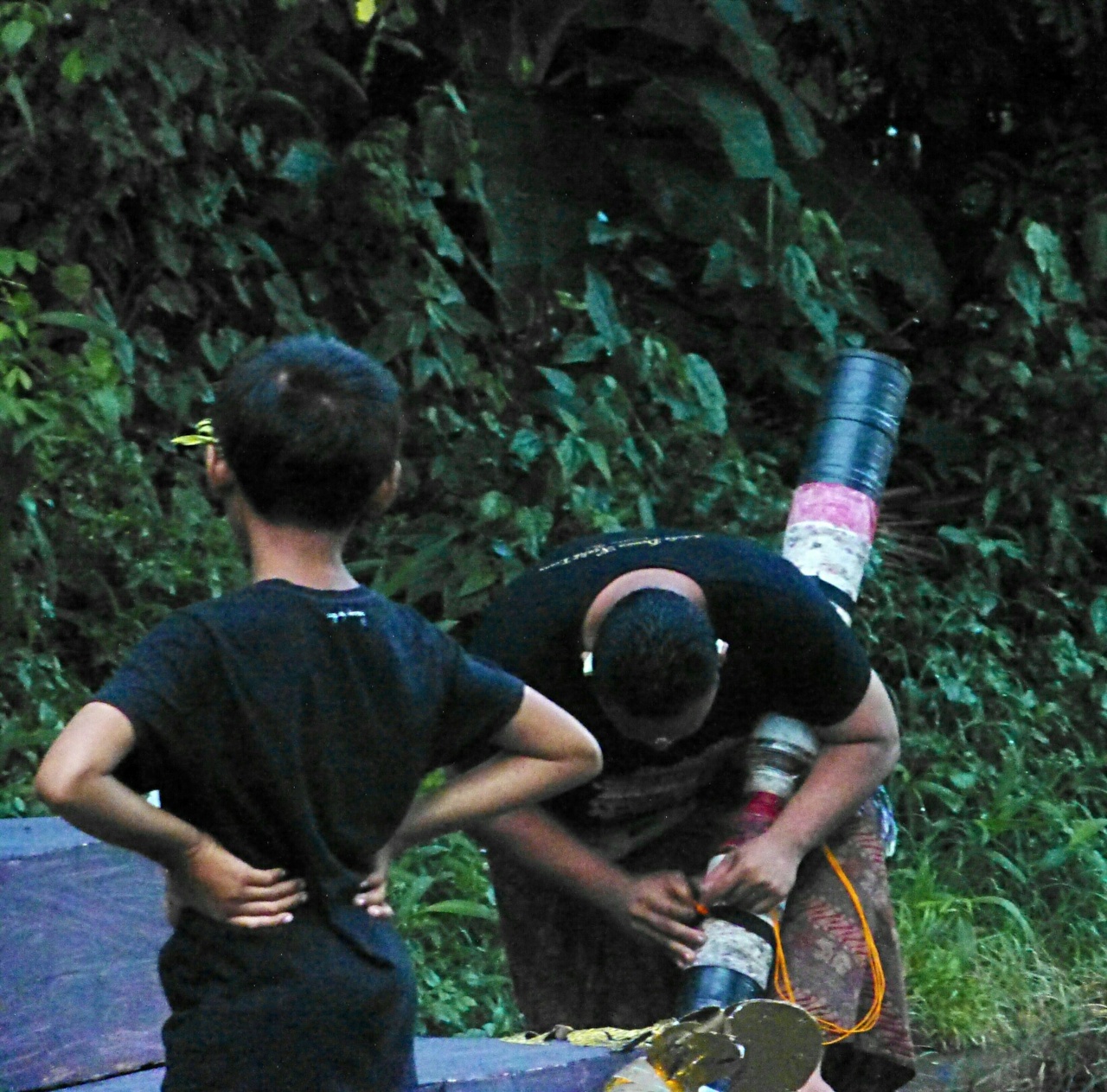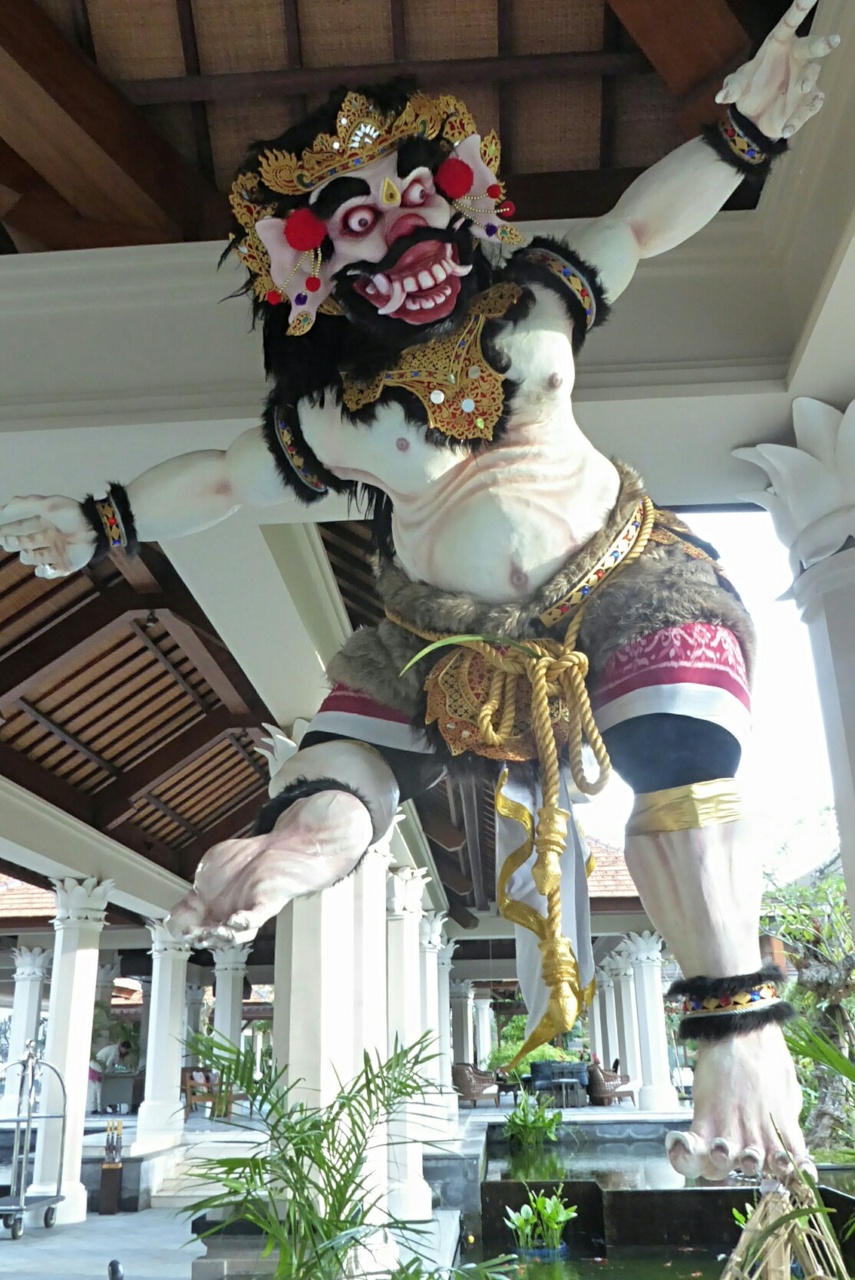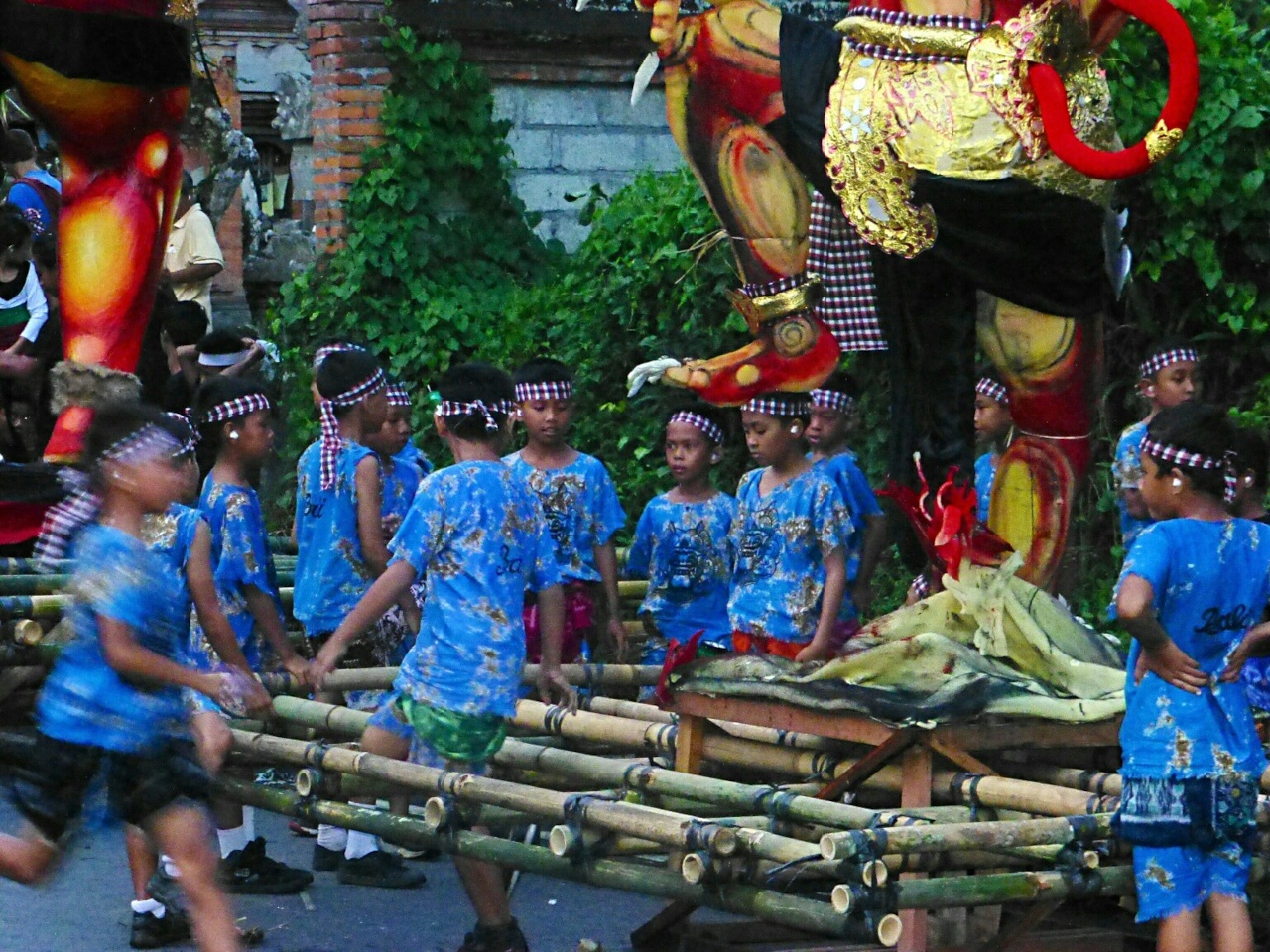
Bali will be closed on Tuesday. The lights will be off and everybody will be at home. Air traffic will stop, the motorbikes will be silenced, not a sound will be heard. Even the dogs and roosters seem to know it’s time to be quiet. Tuesday is Nyepi, the Balinese New Year, and it is marked in a truly unique way – a day of silence.
But first, there must be noise. And lots of it. The black and white checkered cloth (poleng), that you see all over the island, symbolises the duality of existence: life and death, good and evil, light and dark, noise and silence. On Monday evening we will have the noise.
For weeks now, young men in villages have been busy constructing huge monsters, called ogoh-ogoh, that will be carried through the streets on bamboo litters in a colourful (and very noisy) procession. Once it was just spoons and saucepans that frightened the bad spirits away. These days it’s fireworks, gongs, and although not encouraged, ferocious bamboo cannons that could probably deafen anybody standing too close.

Children get into the act with smaller litters and monsters, practising for when it’s their turn to join the grown-ups. At each crossroad in the village the monsters will be turned 360 degrees to confuse the evil spirits. Every village will have a procession. The many small villages that have merged into the entity known collectively as Ubud will collaborate for a huge procession with large crowds of spectators near the Palace. We prefer the camaraderie of our small village. There might only be half a dozen ogoh-ogoh but the spirit is genuine in a non-touristic sense, noisy and huge fun.

The idea is to really frighten those bad spirits away for another 12 months. Sure, they will come back tomorrow, but when they hover over the island and see nothing happening, they’ll take off again. Too boring to stay. I love this notion, and the consequences are all to the good – a cultural day for the environment. Earth hour, times 24.
Monday’s noise will start to fade after midnight when the effigies are burned. In another positive move, polystyrene has been banned and construction must now be all natural materials, like in the old days. At 6am, the silence begins. A silence so profound that it has its own energy. People must stay in their homes or yards, not play music or talk loudly and theoretically not cook or use electricity. People do, of course, but it is all very discreet. Hotels still provide amenities for guests who will enjoy a quiet day by the pool or reading. Anybody who ventures out will be firmly escorted back to their residence by the pecalang, village security men, who are the only people around although emergency vehicles must still do their job if needed. At night, curtains must be drawn with no light visible, but if the weather is good it’s magical to sit in the garden and watch a star show that won’t be visible properly for another year.

Devout Hindus will use the day to pray and meditate on the year just passed, and atone for any wrongs and some won’t eat for the duration. We love this day, but many Westerners can’t abide by the idea of such a period of silence and head to Singapore or one of the other islands for a few days. Even so, the day is respected as a national holiday throughout Indonesia. I find it extraordinary that a population of more than four million people, plus however many tourists, can find the self-discipline to observe this unique Bali Hindu tradition, even though there are many faiths on the island. It gives me hope in a troubled world.
At around 5.59am on Wednesday morning, the first hum of motorbikes will begin. The year 1939 in the Balinese calendar will have begun. Crazy, noisy, busy for another 364 days.